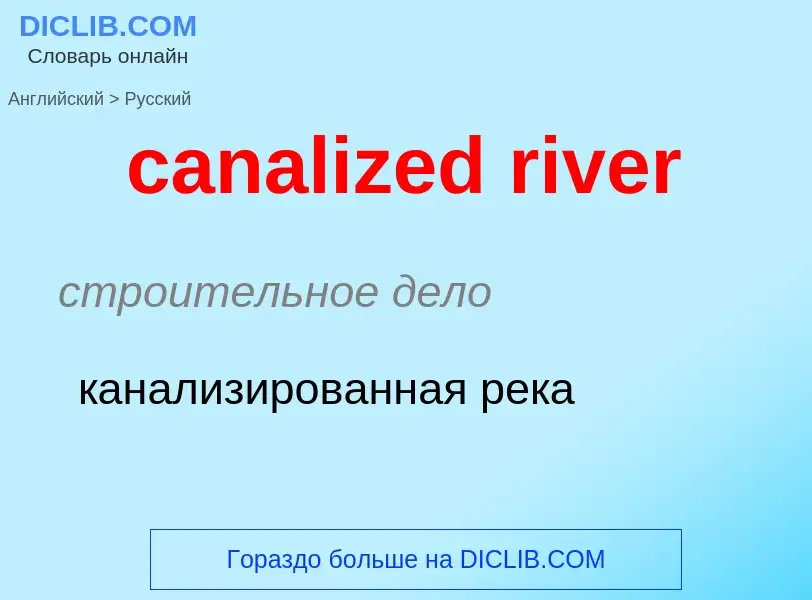Μετάφραση και ανάλυση λέξεων από τεχνητή νοημοσύνη
Σε αυτήν τη σελίδα μπορείτε να λάβετε μια λεπτομερή ανάλυση μιας λέξης ή μιας φράσης, η οποία δημιουργήθηκε χρησιμοποιώντας το ChatGPT, την καλύτερη τεχνολογία τεχνητής νοημοσύνης μέχρι σήμερα:
- πώς χρησιμοποιείται η λέξη
- συχνότητα χρήσης
- χρησιμοποιείται πιο συχνά στον προφορικό ή γραπτό λόγο
- επιλογές μετάφρασης λέξεων
- παραδείγματα χρήσης (πολλές φράσεις με μετάφραση)
- ετυμολογία
canalized river - translation to ρωσικά
строительное дело
канализированная река
Βικιπαίδεια

River engineering is a discipline of civil engineering which studies human intervention in the course, characteristics, or flow of a river with the intention of producing some defined benefit. People have intervened in the natural course and behaviour of rivers since before recorded history—to manage the water resources, to protect against flooding, or to make passage along or across rivers easier. Since the Yuan Dynasty and Ancient Roman times, rivers have been used as a source of hydropower. From the late 20th century, the practice of river engineering has responded to environmental concerns broader than immediate human benefit. Some river engineering projects have focused exclusively on the restoration or protection of natural characteristics and habitats.
Hydromodification encompasses the systematic response to alterations to riverine and non-riverine water bodies such as coastal waters (estuaries and bays) and lakes. The U.S. Environmental Protection Agency (EPA) has defined hydromodification as the "alteration of the hydrologic characteristics of coastal and non-coastal waters, which in turn could cause degradation of water resources." River engineering has often resulted in unintended systematic responses, such as reduced habitat for fish and wildlife, and alterations of water temperature and sediment transport patterns.
Beginning in the late 20th century, the river engineering discipline has been more focused on repairing hydromodified degradations and accounting for potential systematic response to planned alterations by considering fluvial geomorphology. Fluvial geomorphology is the study of how rivers change their form over time. Fluvial geomorphology is the cumulation of a number of sciences including open channel hydraulics, sediment transport, hydrology, physical geology, and riparian ecology. River engineering practitioners attempt to understand fluvial geomorphology, implement a physical alteration, and maintain public safety.: 3–13ff


![The [[Mississippi River]] basin is the largest in the United States. The [[Mississippi River]] basin is the largest in the United States.](https://commons.wikimedia.org/wiki/Special:FilePath/Mississippi River basin.jpg?width=200)
![dredge]] [[barge]] on the [[Vistula River]], [[Warsaw]], [[Poland]]. dredge]] [[barge]] on the [[Vistula River]], [[Warsaw]], [[Poland]].](https://commons.wikimedia.org/wiki/Special:FilePath/Piaskarka Wisła Warszawa 002.jpg?width=200)
![Flood control structures at the [[Thames Barrier]] in London. Flood control structures at the [[Thames Barrier]] in London.](https://commons.wikimedia.org/wiki/Special:FilePath/Thames Barrier 03.jpg?width=200)
